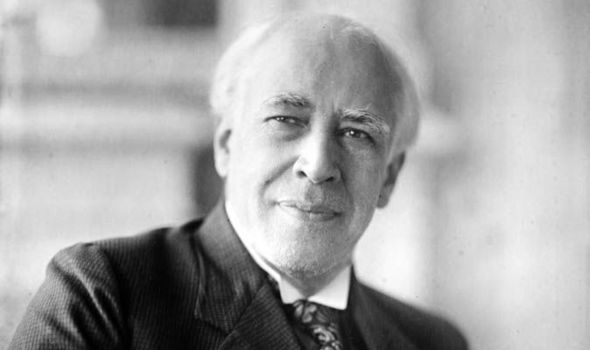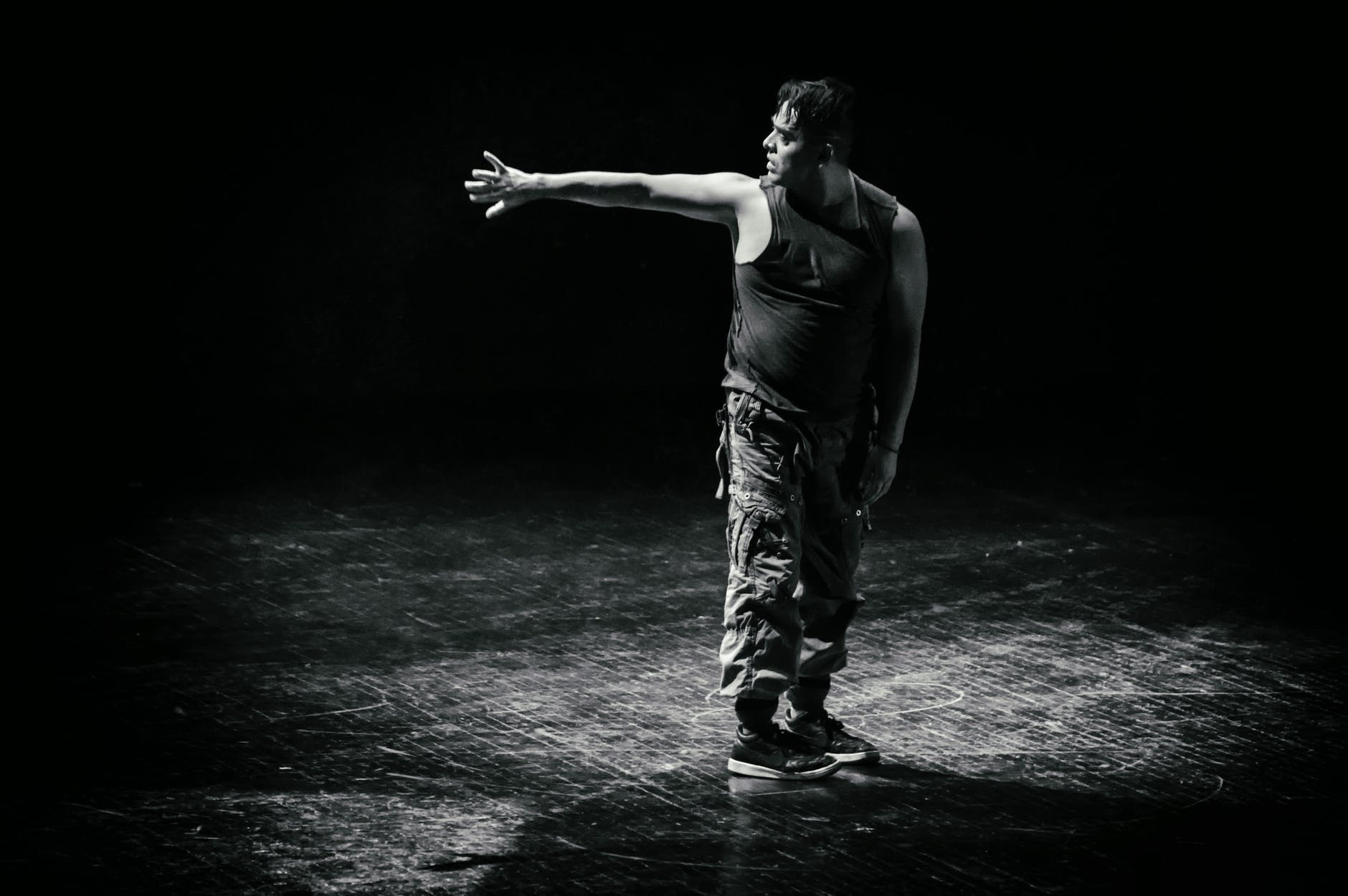What Are the 7 Stanislavski Techniques?

(Konstantin Stanislavski)
RELATED TOPICS:
7 Basic Facts About Konstantin Stanislavski
Stanislavski: ““Love the art in yourself, not yourself in the art.”
Constantin Stanislavski, the legendary Russian actor and theater director, revolutionized the craft of acting with his approach to creating authentic and emotionally rich performances. Known as the Stanislavski System, his methods laid the foundation for modern acting techniques, including “Method Acting.” At the core of Stanislavski’s philosophy are seven essential techniques that help actors develop their craft and create believable characters. This article breaks down each of these techniques and explains their significance.
1. Emotional Memory
 (Photo: Liza Summer | Pexels)
(Photo: Liza Summer | Pexels)
Emotional memory involves drawing on personal past experiences to evoke emotions that match the character’s situation. By recalling a real-life event, an actor taps into genuine feelings that can be used to bring authenticity to a scene.
How It Works:
If a character is grieving, the actor might recall a time they experienced personal loss. They channel that emotion into the performance, creating a more genuine portrayal.
Purpose:
This technique helps actors connect emotionally to their character, making the performance resonate with audiences.
Widget not in any sidebars
2. The Magic If
 Photo by Jonathan Crews on Unsplash
Photo by Jonathan Crews on Unsplash
The Magic If encourages actors to ask themselves, “What if I were in this situation?” This question helps actors place themselves in the character’s shoes, stimulating their imagination and fostering empathy for the character’s circumstances.
How It Works:
If a character is making a life-changing decision, the actor might ask, “What if I had to choose between my career and my family?” By doing this, the actor develops a personal connection to the character’s struggles.
Purpose:
This technique helps actors suspend disbelief and fully immerse themselves in the character’s world.
3. Objectives and Super-Objectives
 (Photo: Cottonbro | Pexels)
(Photo: Cottonbro | Pexels)
Stanislavski emphasized that every character has a goal, or objective, that drives their actions within a scene. Additionally, every character has a broader super-objective, which is their overarching goal throughout the story.
How It Works:
- In a single scene, a character’s objective might be to convince someone to stay.
- The super-objective, however, could be to rekindle a broken relationship.
Purpose:
By identifying these objectives, actors can perform with purpose and clarity, ensuring every action aligns with their character’s motivations.
4. Given Circumstances
 (Photo: Cottonbro | Pexels)
(Photo: Cottonbro | Pexels)
This technique focuses on understanding the context and environment in which the character exists. It includes the setting, time period, relationships, and external factors influencing the character’s behavior.
How It Works:
If the play is set in 19th-century Russia, the actor must consider societal norms, historical events, and the character’s status within that context. This understanding shapes the character’s mannerisms, speech, and actions.
Purpose:
Actors use the given circumstances to ground their performance in the reality of the story, making it more believable.
5. Subtext
 (Photo: Andrea Piacquadio | Pexels)
(Photo: Andrea Piacquadio | Pexels)
Subtext refers to the unspoken thoughts and emotions that lie beneath a character’s words and actions. Stanislavski believed that great acting comes from expressing these hidden layers of meaning.
How It Works:
A character might say, “I’m fine,” but the subtext reveals they are actually upset or hurt. The actor conveys this through body language, tone, or pauses.
Purpose:
Subtext adds depth to a performance, allowing audiences to see the complexity of the character’s emotions and intentions.
6. Concentration and Relaxation
 (Photo: Mikhail Nilov | Pexels)
(Photo: Mikhail Nilov | Pexels)
Stanislavski believed that actors needed to master concentration and relaxation to perform effectively. Concentration helps actors focus on the scene, while relaxation allows them to release physical and mental tension that could interfere with their performance.
How It Works:
- Actors might use breathing exercises to calm their nerves before stepping on stage.
- Visualization techniques can help them concentrate on the world of the character, blocking out distractions.
Purpose:
These techniques ensure the actor remains present and engaged in the moment, delivering a focused and natural performance.
7. Circles of Attention
 (Photo: Genarlo Servin/Pexels)
(Photo: Genarlo Servin/Pexels)
This technique teaches actors to expand or narrow their focus depending on the demands of the scene. It starts with the actor’s immediate surroundings (the smallest circle) and expands outward to include other actors and the audience (larger circles).
How It Works:
In an intimate moment, the actor might focus solely on their scene partner (small circle). In a larger, dramatic scene, their attention might extend to the entire stage or audience (large circle).
Purpose:
Circles of attention help actors control their focus, ensuring they stay immersed in the scene while remaining aware of the performance’s broader context.
The seven Stanislavski techniques—Emotional Memory, The Magic If, Objectives and Super-Objectives, Given Circumstances, Subtext, Concentration and Relaxation, and Circles of Attention—are powerful tools for creating authentic and dynamic performances. These methods help actors connect deeply with their characters, engage their imaginations, and deliver compelling portrayals that resonate with audiences. Whether you’re a seasoned performer or a beginner, mastering these techniques can elevate your craft and bring your characters to life in unforgettable ways.
What is the Stanislavski System?
An In-Depth Exploration of the Revolutionary Approach to Acting
(By Jim Webb)

(Konstantin Stanislavski)
Introduction to the Stanislavski System
The Stanislavski System is one of the most influential approaches to acting, shaping the craft of theater and film for over a century. Created by Konstantin Stanislavski, a Russian actor and director, this method revolutionized acting by focusing on emotional truth, psychological realism, and a deep connection to the character. Stanislavski’s teachings are still used as the foundation for modern acting techniques, influencing countless actors, directors, and playwrights around the world.
At the heart of the Stanislavski System is the belief that acting should be grounded in truth. Actors are encouraged to engage deeply with their characters and tap into their own emotional experiences to bring authenticity to their performances. The method emphasizes the importance of understanding the inner life of the character, their motivations, and their relationships with other characters, in contrast to the stylized, external performances that dominated theater before Stanislavski’s time.
The Foundations of the Stanislavski System
The Stanislavski System is based on several key principles that are designed to guide actors toward more truthful, emotionally connected performances. At its core, the system encourages actors to delve into the emotional and psychological aspects of their characters, rather than simply mimicking external behaviors or relying on pre-determined gestures.
One of the central principles of the Stanislavski System is “emotion memory.” Stanislavski believed that an actor could use their own personal memories and emotions to create an authentic response to a character’s situation. By tapping into their own past experiences, actors can bring genuine emotions to their performances, allowing them to portray a wide range of human feelings more convincingly. This technique helps actors build a deeper connection with their characters and ensures that their performances are grounded in emotional truth.
Another key concept in the Stanislavski System is the idea of the “magic if.” This technique asks actors to imagine themselves in their character’s situation and then consider how they would react. Stanislavski used the example of an actor playing Hamlet and asked them to think, “What would I do if I were in Hamlet’s position?” By using the magic if, actors could unlock more nuanced and personal interpretations of their roles, making the performance feel more organic and believable.
The Importance of Objectives and Actions
In the Stanislavski System, every action on stage must be motivated by a clear objective. An actor’s objective is the goal that their character is trying to achieve within the context of the play. This objective is the driving force behind every line, movement, and gesture the actor makes. By identifying their character’s objective, actors are able to focus their energy on creating a believable performance that serves the story and brings the character to life.
For example, in a scene where a character is pleading with another, their objective might be to convince the other person to agree to a particular request. The actor would then focus on achieving that objective by playing the scene with a sense of urgency, passion, or vulnerability, depending on the emotional stakes of the situation. This technique encourages actors to approach each moment with intention and clarity, avoiding performances that feel aimless or overly theatrical.
Another important element of the Stanislavski System is the emphasis on actions, or “physical actions,” that are designed to support the character’s objectives. Stanislavski believed that the external actions of the body should always reflect the internal desires of the character. If a character is trying to seduce another character, their physical actions—such as the way they move, speak, and make eye contact—should support that objective. The physicality of the character is not separate from their inner life but rather an expression of it.
The Role of the Imagination in the Stanislavski System
The Stanislavski System also places a significant emphasis on the use of the actor’s imagination. In order to bring a character to life, the actor must fully immerse themselves in the world of the play, imagining the circumstances, relationships, and emotions that their character experiences. Stanislavski encouraged actors to develop a rich internal life for their characters, imagining not only the physical actions they might take but also the mental and emotional states they would experience.
For example, an actor playing a character who is grieving the loss of a loved one might imagine how they would feel in that situation. They might visualize the specific memories, places, and objects that would evoke the deepest emotions. This use of imagination helps the actor fully embody the character, ensuring that their performance is not just an external portrayal but a deeply felt and authentic expression of the character’s inner world.
Stanislavski’s emphasis on imagination also extends to the rehearsal process. Rather than merely following the director’s instructions, actors using the Stanislavski System are encouraged to contribute their own ideas and interpretations to the creation of the performance. This collaborative approach allows actors to bring their personal understanding and creativity to the role, leading to a more dynamic and spontaneous performance.
The Stanislavski System and Modern Acting Techniques
While the Stanislavski System originated in Russia in the early 20th century, its principles have had a far-reaching impact on modern acting techniques around the world. The system formed the basis for what is now known as “Method Acting,” which was popularized in the United States by figures like Lee Strasberg, Stella Adler, and Sanford Meisner. These actors and directors built upon Stanislavski’s work, adapting and refining his methods to suit the needs of contemporary theater and film.
One of the key elements of Method Acting that was influenced by Stanislavski is the focus on emotional truth. Stanislavski’s emphasis on using personal experiences to fuel emotional responses was further developed by Strasberg, who introduced the concept of “affective memory.” This technique encourages actors to recall specific memories from their own lives in order to evoke real emotions in their performances. By connecting their personal histories to the character’s experiences, actors are able to create a more honest and deeply felt portrayal.
Stanislavski’s influence can be seen in the performances of many well-known actors, including Marlon Brando, Robert De Niro, and Al Pacino. These actors used the techniques derived from the Stanislavski System to craft performances that were both emotionally complex and highly authentic. For example, Brando’s groundbreaking performance in A Streetcar Named Desire is often cited as a prime example of Method Acting, with the actor using emotional memory and psychological depth to bring his character, Stanley Kowalski, to life.
Criticisms and Controversies
While the Stanislavski System has been widely praised for its ability to foster emotionally rich and believable performances, it has not been without its critics. Some actors and directors argue that the system’s emphasis on deep emotional exploration can be emotionally taxing and lead to a reliance on personal experience rather than the character’s fictional journey. Additionally, some have questioned whether the method is suitable for all types of performances, particularly in styles such as comedy or more stylized theater.
Others have critiqued the Stanislavski System for its potential to create overly introspective performances, focusing too much on the internal life of the character rather than the larger dramatic context. Despite these criticisms, however, the system remains one of the most enduring and influential methods in the history of acting.
Conclusion
The Stanislavski System continues to be one of the most important contributions to the world of theater and acting. Its emphasis on emotional truth, psychological depth, and the actor’s imagination has reshaped the way performances are created and experienced. By encouraging actors to connect deeply with their characters, the Stanislavski System has made acting a more personal, authentic, and compelling art form.
From its origins in Russia to its widespread influence on Method Acting in the United States and beyond, the Stanislavski System has had a profound impact on the development of modern acting. Today, it remains a foundational part of actor training worldwide, providing actors with a powerful toolkit for exploring the depths of human emotion and bringing characters to life on stage and screen.
What are the 4 elements of the Stanislavski system?
An Exploration of the Fundamental Components of Acting Technique
(By Jim Webb)
 (Photo: Cottonbro | Pexels)
(Photo: Cottonbro | Pexels)
The Foundation of the Stanislavski System
The Stanislavski System is widely regarded as the cornerstone of modern acting techniques, having revolutionized the way actors approach their craft. Developed by Russian actor and director Konstantin Stanislavski in the late 19th and early 20th centuries, this system emphasizes a more naturalistic and psychological approach to performance. For actors, the system offers a set of tools to tap into authentic emotions, motivations, and behaviors that create a believable portrayal of characters on stage or screen.
One of the most profound aspects of Stanislavski’s teachings is the focus on the actor’s inner life. Rather than simply relying on external expressions or memorized lines, Stanislavski encouraged actors to use their own experiences and emotions as a springboard for their performances. In this article, we’ll delve into the four essential elements of the Stanislavski system that form the foundation of his acting method.
The Objective: What Does the Character Want?
The first key element of the Stanislavski system is the concept of the objective. Stanislavski believed that every actor must fully understand what their character wants in a given scene, which is often referred to as their “objective.” This objective should be clear and specific, providing the actor with a goal to pursue throughout the performance.
In his book An Actor Prepares, Stanislavski wrote, “The main thing is to find the inner meaning of the situation and reveal it with sincerity and depth.” By identifying the character’s objective, the actor can find a genuine route to achieve that goal within the context of the scene. Whether it’s a desire for love, revenge, power, or recognition, understanding the objective helps the actor become more grounded in their role, fostering an emotional connection with the material.
As Stanislavski emphasized, the objective isn’t always obvious on the surface—it may require interpretation. “Every character has a need, and the need shapes everything they do,” he said. This notion ensures that actors continuously stay engaged with their role, even when the action on stage slows down or takes unexpected turns.
The Action: How Will the Character Achieve Their Goal?
The second core element in Stanislavski’s system is action. Once an actor has established the objective, they must determine the appropriate actions to take in order to achieve that objective. This process involves translating the character’s internal desires into outward behavior that is both authentic and motivated.
Stanislavski emphasized that these actions should be rooted in the character’s specific circumstances and the context of the scene. For example, a character who is attempting to win a debate might engage in strategic language, while a character seeking revenge may display physical aggression. The actor must think about how their character’s actions align with their emotional state and what tools—be they verbal or physical—they can use to meet their goals.
As Stanislavski noted, “The actor must never go into the scene thinking, ‘I am going to perform this action.’ Instead, they should ask, ‘What is it that I need to do in order to achieve my objective?’” This distinction allows for the natural evolution of the performance, where the action flows organically from the character’s emotional and psychological state.
The Given Circumstances: The World Around the Character
Another crucial element in the Stanislavski system is the concept of the given circumstances. These are the external conditions in which the character exists—everything from the time period, location, and societal influences to specific events within the play or film. Understanding the given circumstances provides the actor with context, helping them to fully immerse themselves in the world of the character.
Stanislavski urged actors to examine the script for clues about the world surrounding their character, explaining, “The actor must ask, ‘What is the environment of my character? What is the world that shapes their behavior?’” The given circumstances shape how the actor portrays emotions, behaviors, and actions. The actor must be aware of how external factors influence their character’s inner world and responses.
This includes recognizing the emotional subtext of the character’s situation and the ways in which they are limited or empowered by their circumstances. For instance, a character in a historical drama may act differently compared to a character in a modern-day setting, influenced by the specific time and place in which they live.
The Emotional Memory: Tapping into Personal Experiences
Finally, the Stanislavski system introduces the idea of emotional memory, which is one of the most intimate aspects of the technique. Emotional memory refers to the actor’s ability to draw on personal experiences and memories to evoke real emotions that mirror the character’s emotional state. By recalling a personal event—whether joyful, painful, or traumatic—the actor can create an authentic emotional response on stage.
Stanislavski believed that using emotional memory allowed actors to access deep emotions and create performances that resonate with an audience. He said, “The actor must search their own soul for the emotions required by the role.”
However, Stanislavski also cautioned that the use of emotional memory should not overwhelm the actor. While it is essential to tap into genuine emotions, the actor must always be aware of the character they are portraying and avoid confusing their own life experiences with those of the character. As Stanislavski put it, “The actor’s heart should be open, but their mind must remain sharp.”
The emotional memory component is especially valuable in bringing depth to performances, enabling actors to not just memorize lines but to truly feel and experience the character’s emotions in real-time.
Conclusion: The Power of Stanislavski’s System
The four elements of the Stanislavski system—the objective, the action, the given circumstances, and emotional memory—serve as the bedrock of a truly transformative acting process. By focusing on these elements, actors are equipped to create complex, multifaceted performances that are deeply rooted in authenticity and emotional truth.
As Stanislavski himself said, “True acting is not imitating reality but living it.” Through understanding and applying these elements, actors can break free from external pretenses and engage in a truthful exploration of their characters’ inner worlds. In this way, the Stanislavski system continues to influence generations of actors, ensuring that performances remain grounded in the complexities of human experience.



